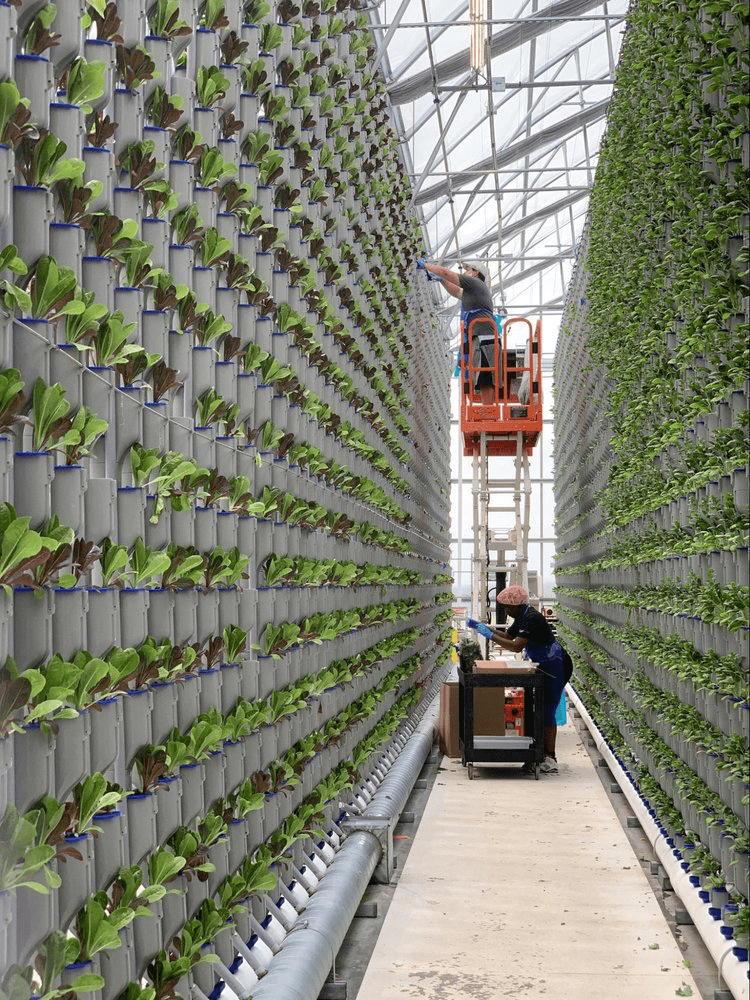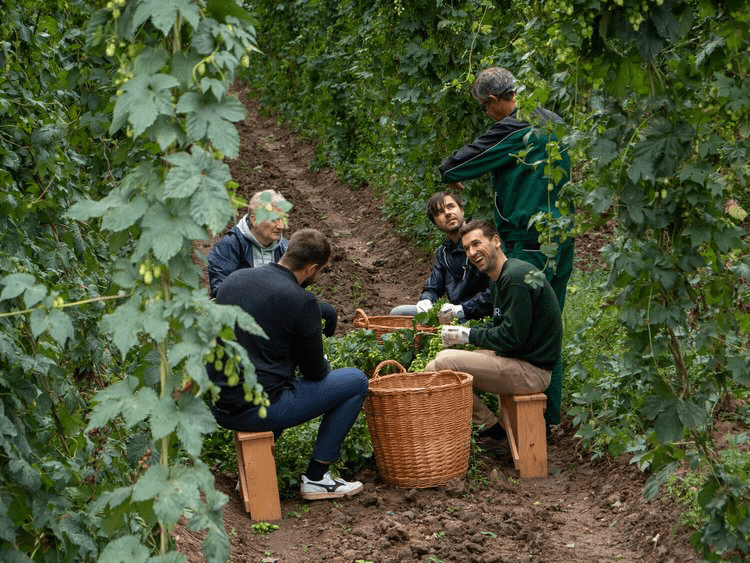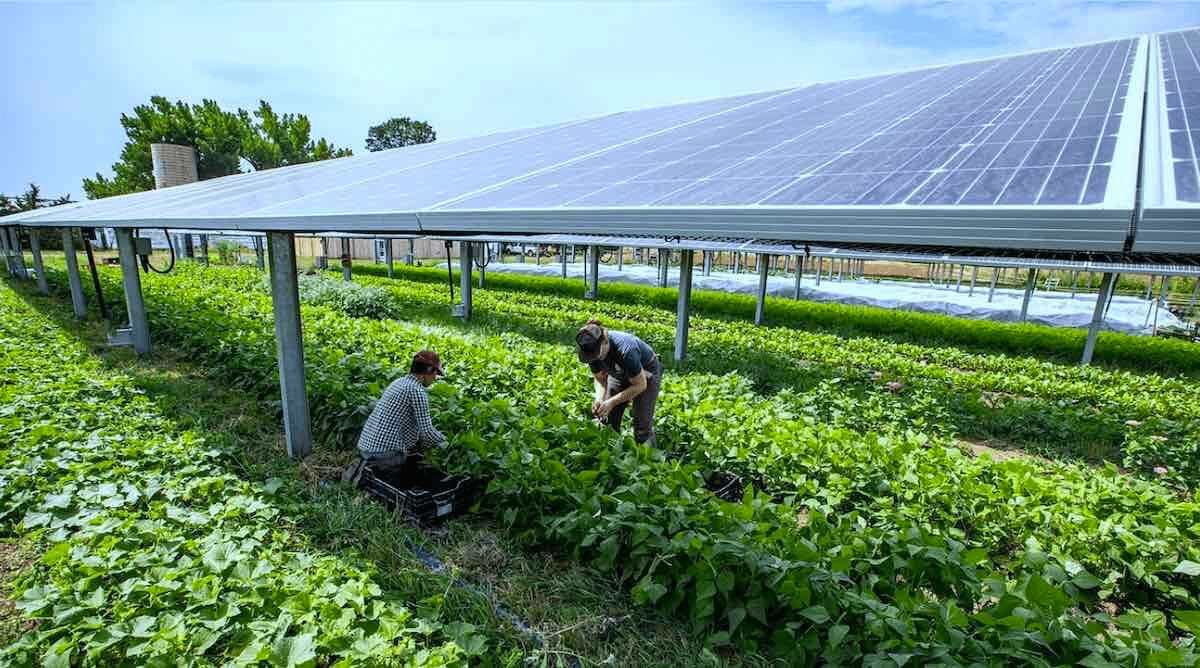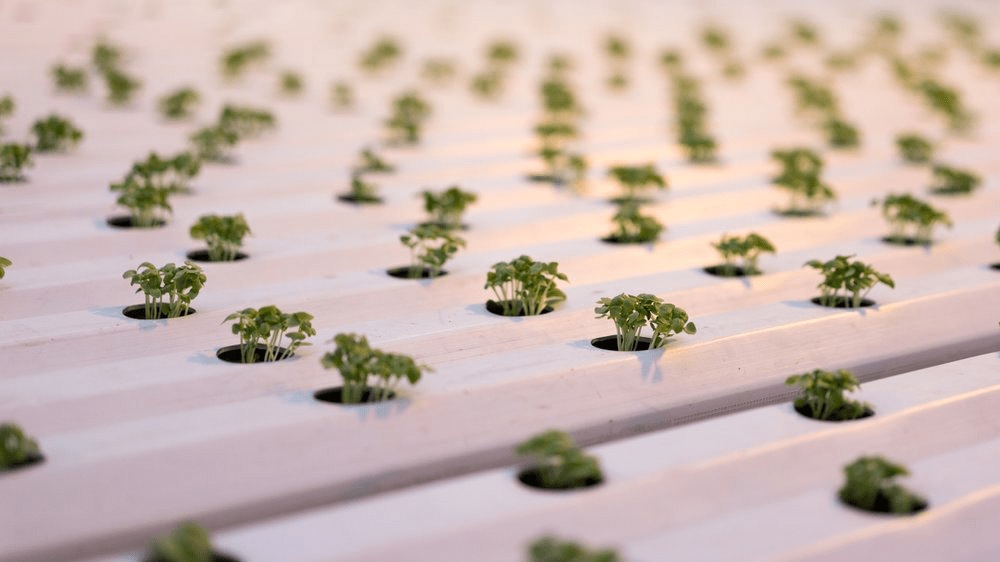Mar 16, 2023
Exemplary Approaches to Hybridizing Agriculture

Rendering sourced from Richard Aguilar
Editor’s Note: The following is an adapted excerpt of a contribution chapter from Agritecture to an upcoming book advocating global food reform: Menu B, written by a who’s who of global food reformists and changemakers that have been aggregated by Marc Buckely, SDG Advocate Expert World Economic Forum Global Food Reformist. Read more HERE.
Written by: Sustainability Analyst, Brakeley Bryant & Founder & CEO, Henry Gordon Smith
The third industrial revolution has long been considered the turning point for our planet.
Experts say that this transition to new manufacturing processes has pushed earth out of the Holocene – an epoch with predictable climate patterns that allowed humanity to thrive for around two million years – and into the Anthropocene – an epoch in which humanity’s population and economic development impact the Earth’s global environment in a distinct and measurable way.

Image sourced from Eden Green
In other words, since the 1950s, the increased industrialization, urbanization, and globalization of humanity have collectively overstepped the planetary boundaries in which we know humans can thrive.
The very resources upon which we fundamentally depend, such as food, water and energy, are being depleted faster than ever. As such, we are now in an unprecedented time, a phrase repeated much too often, that demands creativity in return for continued survival.
The fact of the matter remains, however, that any action we take has consequences — some are good, some are bad, and some are somewhere in between. Moreover, the determinants of these consequences can shape-shift, which adds a layer of increased complexity.
Let’s take a look at what this means for agriculture.
The increased globalization of the food system over the past 50 years has spread the false narrative to many governments and businesses that a one-size-fits-all conventional approach to agriculture is the solution to food insecurity. In other words, bigger is better and yield is king.
This perspective has depleted soils, increased food travel emissions, and has yet to put a truly sustainable dent in achieving food security. Various technologies and methodologies have begun to crop up over the last decade, presenting themselves as “silver bullets” to this food system problem.
Greenhouses and vertical farms, widely known as trusted methods of year-round agricultural production, seem to be context-agnostic solutions to agri-food supply chain disruptions, desertification, and other climate change-related problems.
However, they have very significant capital costs. A greenhouse that has environmental controls to deliver fresh produce year-round might cost USD $40 or more per square foot and require significant energy use. Vertical farms too could cost upwards of $350 per square foot, and require even more energy.

Image sourced from iFarm
Further, there are political and behavioral considerations to keep in mind as well that may influence the consequences of which method is chosen. So, while these solutions may make sense for some countries with more efficient technology, more developed markets, and low arable land, in other countries they would not. Instead, it might make more sense to grow outdoors or in other mixed methods in these places.
Figuring out this balance of context and timing for agri-food solutions is what we at Agritecture call the Hybridization of Agriculture.
The term is meant to capture the nuance between different agricultural methods that are often promoted as competing against each other, when in fact, they overlap, and various combinations of them can reap greater environmental, economic, and social benefits than any one solution alone.
The Hybridization of Agriculture illustrates the notion that there is greater potential output when we consider all the possible methods of agriculture and match them to find synergies. However, finding this balance requires thought and time. Let’s look at some examples.
One example of the Hybridization of Agriculture can be seen in Agritecture’s recent collaboration with Microsoft’s AI for Earth Grant Program. In 2021, we were awarded a grant to work with Czech farmers on ways to combine Internet of Things technologies (IoT) and Artificial Intelligence (AI) to help hop farmers adapt to climate-related volatility in yields and quality.

Photo by Agritecture, For Hops Project
For context, as a key ingredient in beer production, hops help keep beer fresher for longer, ensure that it retains its signature head of foam, and are critical to the aroma, flavor, and bitterness that consumers love. The first Pilsner was brewed in the Czech Republic in 1842. The country has had a long tradition of hop-growing, spanning over 1000 years. With nearly a 10% share of the global harvest, it is the third-largest producer of aroma hops in the world.
However, patterns of increasing warming and drought brought on by climate change are threatening certain characteristics of Czech hops. In 2015, the country was hit with a drought that resulted in a 34% reduction in hops production. The same problem arose in 2018 when summer droughts cut the country’s hops yield to 30% below average.
Additionally, alpha acid levels, which are the main bittering agent in hops, appear to fluctuate based on climate conditions. As these two parameters become more volatile due to a changing climate, the ability of farmers to produce with confidence becomes more and more challenging.
Now that the project is underway with IoT sensors installed across six pilot farms and AI-powered algorithms in development, this project is marrying the age-old traditions of hop farming with small, scalable technology interventions to give farmers more capabilities to keep growing successfully while being empowered by data.
A second example of the Hybridization of Agriculture that is gaining popularity is agrivoltaics, also known as agri-Photovoltaics (or agri PV).
Agrivoltaics is a hybrid of colocated solar photovoltaic (PV) infrastructure and agriculture. In short, it involves field farmers adding solar panels on top of their fields.

Jack’s Solar Farm – Photo by Werner Slocum: NREL
Why do they do this? Well, the overall returns on the crops and the solar photovoltaics (PVs) revenue are both increased. Contrary to conventional thinking, both the PVs and the crops benefit under certain conditions. The solar PVs generate additional revenue for the farmers, as they can sell the energy generated on their lands. Furthermore, the green vegetation spaces below the panels–typically shade-loving pollinator crops, nursery crops and certain vegetables–prove beneficial in cooling the panels, which optimizes their efficiency and performance. In warmer climates with high solar radiation, the panels provide helpful shading for crops which can improve crop performance as well. If fodder is planted instead of marketable crops, animals can graze on this land and benefit from the panels’ shading effect as well.
Moreover, the combined use of solar photovoltaic technology and agriculture allow farmers and energy developers to use the same land. This preserves the agricultural character of the area’s rural communities while also allowing each party to reap the benefits stated above.
For instance, Jack’s Solar Farm, an agrivoltatic operation in Colorado, USA, generates enough energy to power 300 private homes while also producing tomatoes, turnips, carrots, squash, beets, lettuce, kale, chard, and peppers. This operational infrastructure allows Jack’s solar farm to have revenue streams from 50 energy clients — including the city and county governments – and from produce sales too.
Now, agrivoltaics does not work everywhere in the same way, but when farmers open their minds to unconventional approaches like agrivoltaics, they can often leapfrog conventional performance and revenue.

A third example of Hybridization is the Scottish company Intelligent Growth Solutions (IGS).
IGS is a multi-award, international agritech innovator who primarily sell integrated and automated vertical farming solutions to producers globally. These solutions usually produce the standard leafy greens, herbs, and packaged salad mixes. However, IGS has found a new way to integrate its technology into conventional agriculture. Specifically, they use vertical farms to produce seeds and seedlings for outdoor agriculture.
This solution is particularly relevant for crops like potatoes, where the seeds often get contaminated and have significant mortality rates when germinated outdoors. Outdoor potato seed production also takes up more land, and is subject to adverse weather conditions and pests. In contrast, growing potato seed indoors in a vertical farm, allows for protection from weather pests and other contaminants, as well as faster production overall. This new approach of moving away from vertical farming as a standalone solution and towards it complimenting conventional field agriculture exemplifies the Hybridization of Agriculture trend well.
Embracing open-mindedness when challenging the status quo of agriculture can unlock new potential for farmers.
As our planet enters the Anthropocene, Agritecture seeks to pinpoint synergies that can help society adapt one of our most important and foundational systems, the agri-food system, to unprecedented climate and resource challenges.

Photo Courtesy: James O’Neil/Getty Images
It has now become a necessity to open our minds to agri-food processes that creatively leverage the benefits of both modern, high-tech solutions, and traditional, regenerative ways of knowing.
By leveraging the ‘Hybridization’ of resources and knowledge, our societies can build upon our collective experience, while actors in the agri-food industry can benefit from each other's progress. Further, they can implement innovative tactics of learning and problem-solving for the greater benefit of resilient and adaptable agriculture.
Local entrepreneurs, policymakers, corporations, and governments are all faced with their own unique agri-food system puzzles, and companies such as Agritecture can help them fit these pieces together.
So now what? What can you do to be a part of the hybrid solutions we need?
Well, it begins with a curiosity to look beyond the hype, examine the priorities and motivations of actors already involved, and find and develop synergies where they’re beneficial for people and the planet.
About The Authors
Henry is an acknowledged global thought leader in the vertical and urban agriculture industry. He has spoken at sustainability-driven forums and events worldwide, and has 10+ years of experience consulting and spearheading numerous sustainability initiatives.
Expertise: concept development, strategic planning, sustainability assessments
Brakeley Bryant is a sustainability analyst specializing in sustainable food systems and innovation at Agritecture. She holds an MSc in Innovation and Global Sustainable Development from Lund University and a BS in Business Administration from Boston University.
Expertise: sustainable food systems, innovation, market research



.png)
